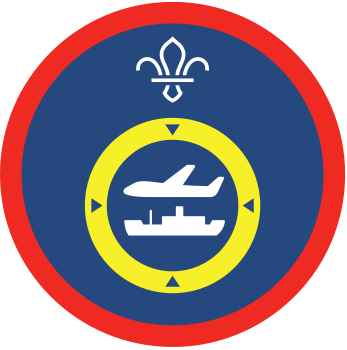
Nautical navigator
You’ll need
- Pens or pencils
- Rulers
- Compasses
- Plotters
- Nautical charts or maps
- Access to a sailing vessel
- Weather-appropriate clothing
- Safety equipment
- A dead reckoning is a method of estimating your position while travelling at sea without the use of a GPS or any other way of accurately finding your position.
- A dead reckoning isn’t completely accurate, but it gives a reasonable guess. You don’t need to be able to see any features or use any electronic equipment.
- The key to effective sea navigation without a GPS is to be constantly keeping track of your location by obtaining a fix (working out your position using features around you).
- You can do this in lots of different ways, such as using transit bearings, charted objects, or a running fix.
Before you begin
- When heading out on a sea adventure it’s important to be properly prepared and stay safe. Check out yachting ahead of your sailing trip for more information about rules and permits.
- The badge requirement involves sailing for four to six hours in one stretch. You could do this during a camp or extend your usual session.
- Familiarise yourself with plotting positions using a dead reckoning, and plotting an observed position using different methods of obtaining a fix. Try reading this article about the eight traditional ways to find a fix, plus six more.
Get onboard
- The person leading the activity should explain what a dead reckoning is and how to plot an observed position by obtaining a fix.
- Everybody should sensibly board their boat, making sure they are wearing weather-appropriate clothing and safety equipment. Make sure everyone is prepared for at least four hours of sailing and has everything they need with them.
Get a dead reckoning
- To get a dead reckoning position, you need to know a starting point, a heading, and the distance travelled. Start by taking a bearing and performing any adjustments for magnetic deviation and variation to create a true heading.
- Turn the bezel on a compass or plotter to show the adjusted true bearing.
- Place the edge of the compass or plotter against your last known position on your map or chart. Line up the lines on the bezel with the grid lines on the map, making sure the north marker on the bezel points towards north on the map.
- Draw a line from the last known position along the edge of the compass or plotter, in the direction you have travelled. This direction will be marked on the compass with a large arrow (the direction of travel arrow).
- Use a ruler or dividers to mark how far you’ve travelled along the line and mark this position, along with the time you recorded it. This is your dead reckoning position.
- Keep up the dead reckoning by plotting the boat’s estimated position at least every hour during the sailing session.
Obtain a fix
- Try different ways to obtain a fix. See which works best, helping to accurately keep track of your location.
- At least once per hour, plot the boat’s observed position by obtaining a fix.
Reflection
This activity was about developing new skills. Modern technology often replaces older methods and techniques, and can make life a lot easier. What’s the point in learning and using traditional techniques? People could think about how modern electronics like GPS systems could break, run out of battery, or be lost over the side of a boat. Knowing how to effectively use other navigation techniques can get people out of sticky situations.
Learning traditional techniques can help people to better understand how modern methods came about and how they work. This understanding can help people to improve their skills and learn new things more quickly and effectively. This isn’t just true for sailing: lots of modern tools have replaced traditional methods. Can anyone think of other examples?
Safety
All activities must be safely managed. You must complete a thorough risk assessment and take appropriate steps to reduce risk. Use the safety checklist to help you plan and risk assess your activity. Always get approval for the activity, and have suitable supervision and an InTouch process.
- Adventure
This activity has specific rules and systems to make sure it’s managed safely. Take a look at adventure activities for more guidance.
- Water games and activities
Be careful when doing activities with, in, or near water. Check surfaces and reduce the risk of slipping where possible. Make sure you have appropriate supervision for this activity.
Choose different methods of obtaining a fix, or how often you perform a dead reckoning.
Sailing boats can be large with plenty of space. They can also be adapted in many different ways to suit different needs. Try looking for a specialist centre in your area or get in touch with your provider early to design a session to suit your group.
All Scout activities should be inclusive and accessible.
Encourage young people to find and use the methods that work well for them, and explore different ways of getting the information they need.
